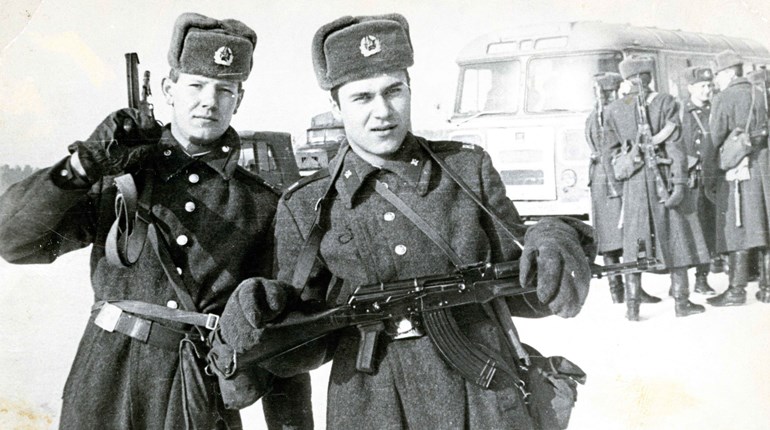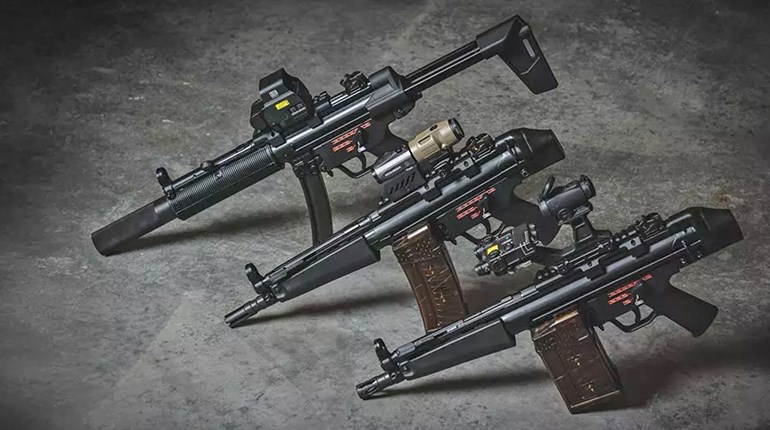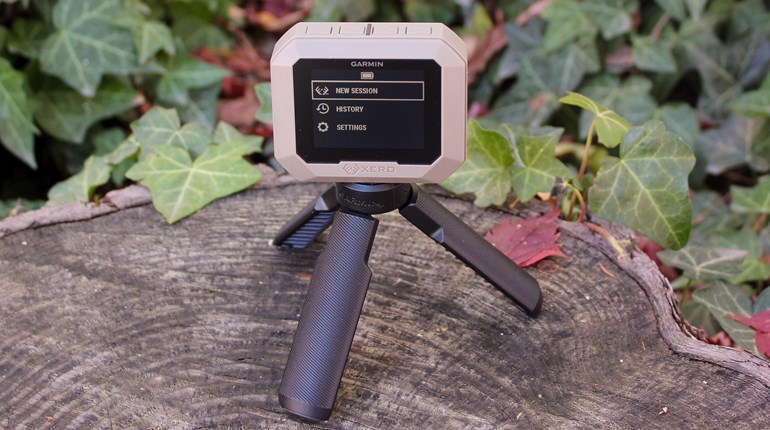
This article, "1891 Argentine Mauser" appeared originally as a Classics column in the April 2017 issue of Shooting Illustrated. To subscribe to the magazine, visit the NRA membership page here and select Shooting Illustrated as your member magazine.
One of the most conspicuous attractions in Plaza San Martín in Buenos Aires is a Memorial to the Fallen. Its blood-red walls and eternal flame remember the 649 Argentine soldiers, sailors, airmen and Marines who lost their lives during the 74-day-long war in the South Atlantic in 1982. While we know it as the Falklands War, Argentina remembers it alternatively as Guerra del Atlántico Sur or Guerra de las Malvinas. Although the failure to take the Falklands from the U.K. in 1982 ended the military junta that brought on the war to begin with—paving the way to a more democratic future—it was nevertheless a blow to national prestige that haunts Argentina to this day.

It remains a sore subject in a country that is respectful of the men who survived the war and reverent of the men who did not. Their reverence is such that, on most days, an honor guard is posted at the Memorial to the Fallen at Plaza San Martín. Sometimes the members of this honor guard are from Ejército Argentino (the Argentine Army) and are armed with 19th Century Rolling Block rifles, but sometimes the members of the honor guard are from Armada de la República Argentina (the Argentine Navy) and they carry the rifle that transitioned the country from the 19th Century to the 20th—the Model 1891 Argentine Mauser.
When Argentina sought to adopt a modern, repeating rifle for its military in the late 1880s, it was at a time when Paul Mauser’s recent designs offered the state-of-the-art. In 1889, Fabrique Nationale d’Armes de Guerre began manufacturing a Mauser-type rifle for the Belgian Army that was chambered for the rimless 7.65x53 mm rifle cartridge. Shortly thereafter, the Ottoman Turkish Empire adopted an almost identical derivative for its military and they even went with the same caliber. Then, the following year, Argentina adopted a slightly modified version of the Belgian 1889 as Mauser Modelo Argentino 1891, also known as the 1891 Argentine Mauser.
The 1891 Argentine Mauser is a cock-on-close, striker-fired repeater feeding from an internal five-shot, single-stack box magazine. Like its Belgian and Turkish predecessors, the Argentine 1891 uses a bolt with front-locking lugs, the distinctive Mauser “wing”-type safety selector, a one-piece wooden stock, and a wood upper handguard that is secured to the barrel by two segments of copper wire. Argentina purchased the Modelo 1891 in three different configurations: a full-length rifle, a Cavalry Carbine and an Engineer Carbine. The 1891 rifle features a 29.13-inch barrel, an adjustable rear sight graduated to 2,000 meters and a straight bolt handle, while both carbines are equipped with 17.6-inch barrels, rear sights graduated to 1,400 meters, and turned-down bolt handles. All of the 1891 Argentine Mauser rifles and carbines were manufactured in Berlin first at Ludwig Loewe & Company, and after 1896 at Deutsche Waffen und Munitionsfabriken Aktien-Gesellschaft (“DWM”).

Whether made by Loewe or DWM, the 1891 Argentine Mausers are beautifully made firearms well-known for their spectacular receiver markings. In addition to the model designation and the manufacturer information, the front receiver band of each rifle and carbine was beautifully rollmarked with the distinctive Argentine national crest. This emblem consists of a wreath enclosing three symbols important to the country’s national identity: a pair of hands in mid-handshake representing unity, a wooden pike representing power and a Phrygian cap representing freedom. At the apex of the crest, the sun shines down in a metaphor indicating a national aspiration and optimism that would not follow Argentina through the politically complicated 20th century. The Phrygian cap and the shaking hands also appear on various parts and components of the 1891 rifles and carbines as proof and acceptance stamps, making each gun a handsome example of late 19th-century gunmaking craftsmanship.
Collectors in the U.S., though, often find the national crest ground off of Argentine 1891 Mausers. This was done in the aftermath of the Chaco War of 1935, which pitted Bolivia and Paraguay against one another in a vicious albeit brief struggle for control of South America’s resource-rich Chaco Boreal. Argentina provided Paraguay with a large number of Model 1891 Mausers during the conflict in a move that jeopardized its relationship with Bolivia. The presence of unground national crests made it impossible to deny Argentina’s direct support for Paraguay, so after the war Argentina instituted a law requiring the removal of the national crest from any gun leaving the country. Although the government in Buenos Aires later dropped this requirement, by then most of the Argentine 1891 Mausers had been ground, and this accounts for why it is rare to find one with the crest intact.
The German-made 1891 Argentine Mausers were ultimately phased out of active service when Argentina began licensed domestic production of the Model 1909 Mauser. It serves to this day but in a ceremonial capacity only. If you’re ever in Buenos Aires, you might even spot sailors there guarding the Malvinas Memorial with it.




































